Over the last few decades, what we know about dietary fats has evolved. In the 1990s, we thought all fat was bad, thus the explosion of low-fat diets and fat-free snacks. Fast-forward to today, and now we know better.
Some fats, like the ones found in nuts, seeds, avocados, and olive oil, have many healthy properties. But there are indeed unhealthy fatty foods rich in saturated and trans fats that, if consumed in excess, may lead to serious health issues, such as cardiovascular disease, certain cancers, and other health conditions.
Sausage
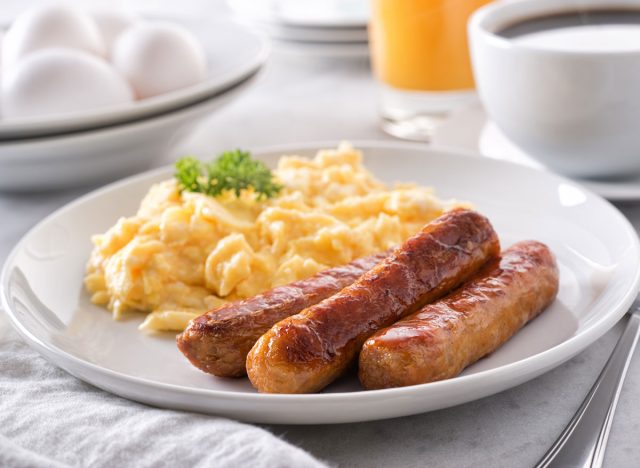
Sausage, whether it's part of your breakfast spread, incorporated into a meatball recipe, or sizzling on the grill during summer, ranks among the unhealthiest fatty foods. While it offers a protein punch, it's surprisingly high in fat, typically crafted from pork along with an array of spices, herbs, and seasonings.
According to the USDA, pork sausage provides more fat than protein, and fat makes up most of the calories in this food. Not to mention, a third of the fat in pork sausage is from saturated sources. This makes it an unhealthy source of fat in addition to its high sodium content and the concerning preservatives sometimes used, like sodium nitrates. If you love the flavors of sausage, look for chicken or turkey varieties that are much lower in fat and avoid options that also contain nitrates.
Bacon
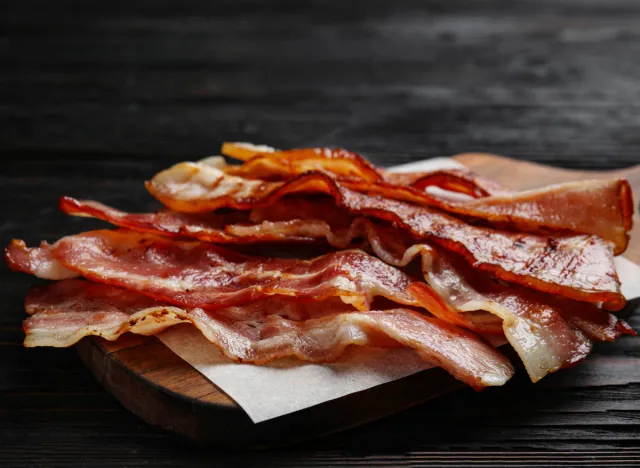
Many people add bacon to their meals to boost protein, and while you get a couple of grams per slice, the fat and saturated fat in your dishes will be driven up too. Bacon contains just as much fat in a single slice as protein. For a lower-fat alternative, turkey bacon is a great option, with some varieties even omitting nitrates for an even healthier option.
Shortening
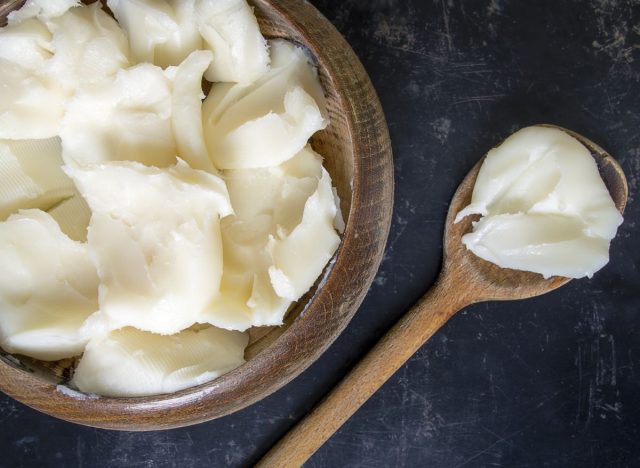
Shortening is a type of manufactured fat that is solid at room temperature. It is most often used in baking because it lends to a crumbly pastry texture; however, its popularity has decreased over the years as we learned more about the unhealthy fats it contains.
Shortening is made by adding hydrogen to vegetable oil. This hydrogenation process produces trans fats, the most concerning form of dietary fat. Because of the trans fats sound in shortening, it should be an ingredient you drastically limit in your cooking and baking. You could even remove it completely from your pantry and use butter in your baking as a slightly healthier alternative. Although the fats in butter still aren't as healthy as those in olive oil, for example, there is a little less concern over the saturated fat in butter than the trans fats in shortening.
Ice Cream

Finishing your day with a bowl of ice cream is a pastime for many, but those scoops aren't doing any favors for your health. Ice cream is typically made with whole milk and heavy cream, two ingredients with high fat contents. While each dairy-based liquid provides important nutrients, like vitamins A and D, and calcium, a large amount of fat comes from saturated sources. For example, 100 grams of heavy cream contains 35 grams of fat, and 20 of those grams are saturated. About half of the fat grams in whole milk come from saturated fat, making it slightly healthier.
The saturated fat in ice cream isn't the only thing that makes it unhealthy. You'll also find ice cream loaded with added sugar, another concerning ingredient. If you're craving a sweet treat, look for low-fat, low-sugar ice cream and frozen yogurt as healthier alternatives.
Salad Dressing
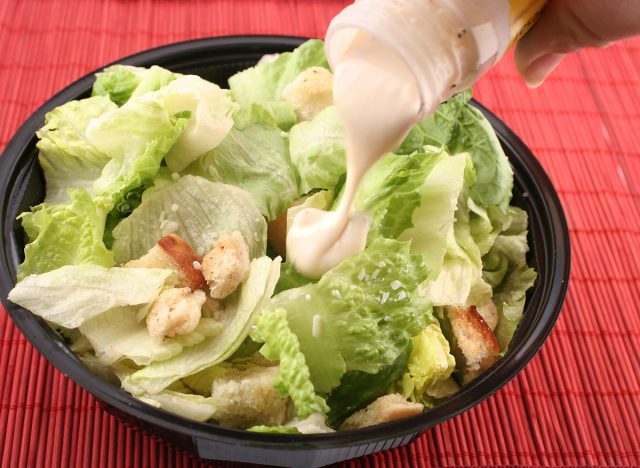
A bed of lettuce loaded with veggies and lean protein may be one of the healthiest meals, but the dressing you use to top your veggies is a different story. Manufactured salad dressings are generally high in fat and contain added salt, sugar, and preservatives that make them less healthy than most dressings made at home. Creamy dressings, like ranch, are especially unhealthy because they contain ingredients that provide saturated fat. It is also especially high in calories, which can contribute to meals loaded with excess energy.
Instead of bottled creamy dressings, go with vinaigrette-style options. Although these are made with vegetable oil, which isn't quite as healthy as olive oil, they have a better nutrition profile than most creamy dressings. Your best bet is to make your own dressing at home using olive oil, vinegar, and seasonings of choice.
Pastries
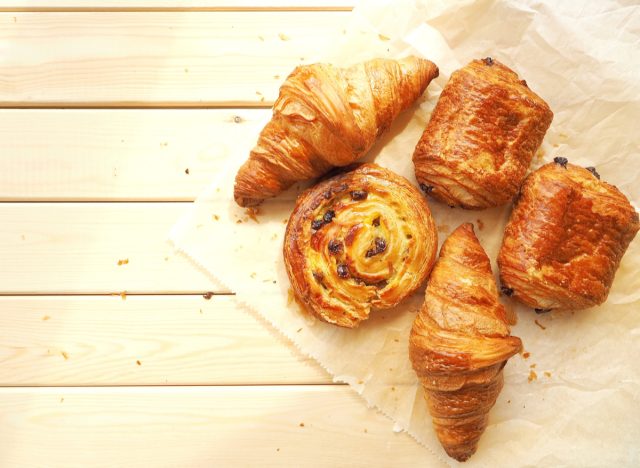
From donuts to croissants and biscuits, pastries are another source of unhealthy fat. The type and amount of fat in pastries are a concern, but so is the added sugar content. Added sugar has been linked to health conditions like increased liver fat and a negative impact on blood lipids, both of which could lead to serious health complications. Most pastries are made with butter or shortening, which is why they are considered an unhealthy source of fat. Even those made with oil, like soybean oil, may not be high in saturated fat, but they may promote inflammation in your body.
Homemade pastries can be made in a way that limits unhealthy fats. For example, use unsweetened applesauce instead of oil or plant-based butter instead of shortening or regular butter.
Red meat
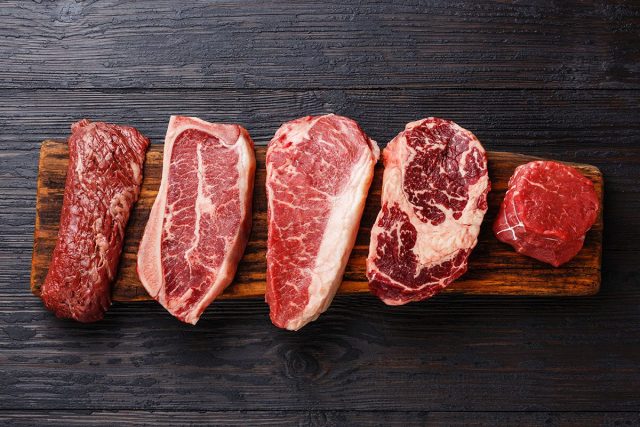
Whether you enjoy a ribeye or hamburger, beef is another unhealthy fatty food. While it does pack plenty of protein, fattier cuts of beef pack a high amount of fat grams and saturated fat. Even though saturated fat isn't considered to be as bad for your health as trans fats, the American Heart Association recommends that no more than 6% of your total calories in a day come from saturated fats. For someone who eats 2000 calories per day, this means limiting your intake to no more than 13 grams of saturated fat. For reference, a 3.5-ounce portion of ribeye provides more than half this amount at 8 grams.
You don't need to cut out red meat from your diet completely, but when you do enjoy beef, choose lean cuts with limited visible fat and purchase ground beef that is at least 93% lean.
Hot dogs
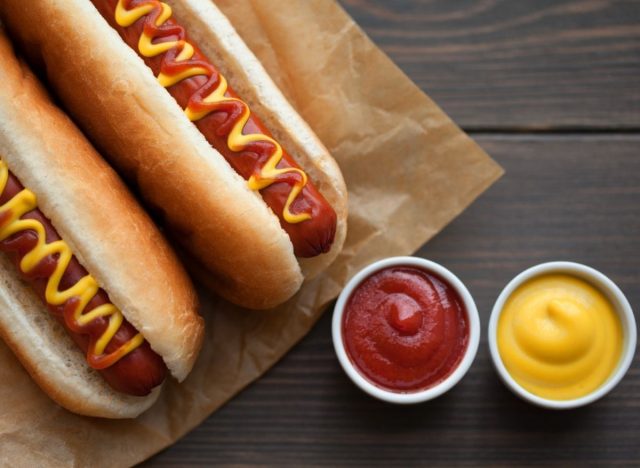
Speaking of meat that is an unhealthy source of fat, hot dogs are at the top of that list. Hot dogs are most often available in pork and beef varieties, both of which have a high fat content. In fact, a single beef hot dog can have twice as much fat as is does protein. Not only does this make it a poor source of protein, but the 13 grams of fat provide a considerable amount of saturated fat. In addition to be an unhealthy source of fat and providing minimal protein, hot dogs can also be high in sodium and contain concerning preservatives, like nitrates.
Poultry skin
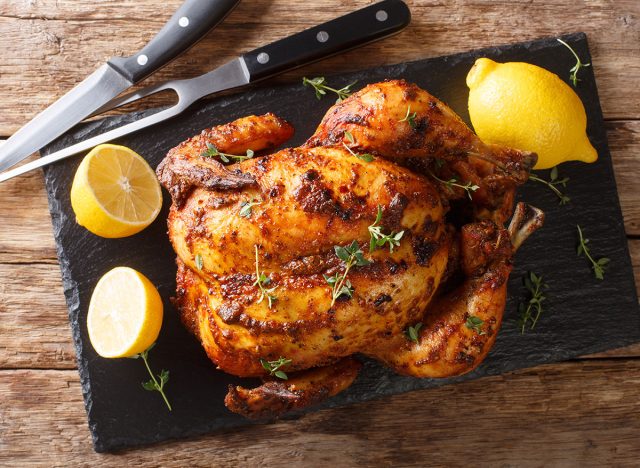
When cooking your Thanksgiving turkey or breaking down a rotisserie chicken, the skin is often thought of as the most flavorful part of the bird. This is likely true because of its fat content, but it's also what makes it an unhealthy fatty food.
Poultry skin may provide a desirable texture and flavor, but it could be at the expense of your health. A 3.5-ounce serving of chicken skin provides over 30 grams of fat, about a third of which comes from saturated fat. You'll get a little bit of protein from the skin, but not nearly as much as what is found in the white meat.
Fried foods
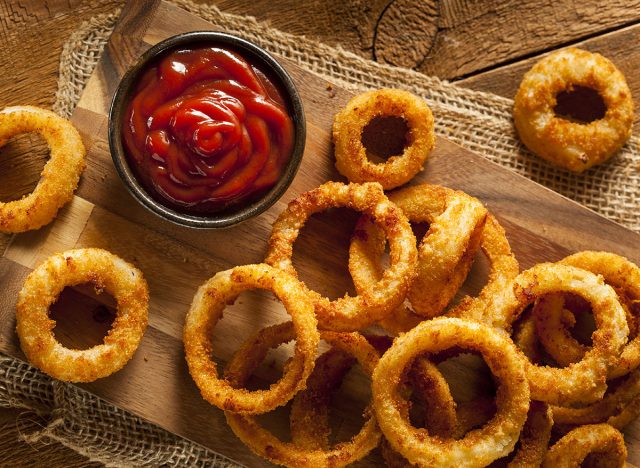
Have you ever enjoyed a crispy funnel cake at the fair, savored your favorite chips, or relished the crunchy onion rings alongside your burger? While delicious, these beloved fried delights serve as prime examples of unhealthy sources of dietary fat.
The rationale behind why fried foods are some of the unhealthiest fatt foods is twofold: You have the fat in the food item plus the fat from the oil used to fry it.
For example, a corn dog contains the unhealthy fat from the hot dogs plus the unhealthy fat found in most common frying oils. Corn and blended vegetables are most often used for frying, and both of these oils contains high amounts of Omega-6 fat. This type of fat may promote inflammation in the body, especially when your intake of omega-3 fat is too low.
While occasional indulgence in fried fare can be worked into a healthy meal plan, but keep it minimal and choose grilled, baked, and sauteed items more often.
No comments:
Post a Comment